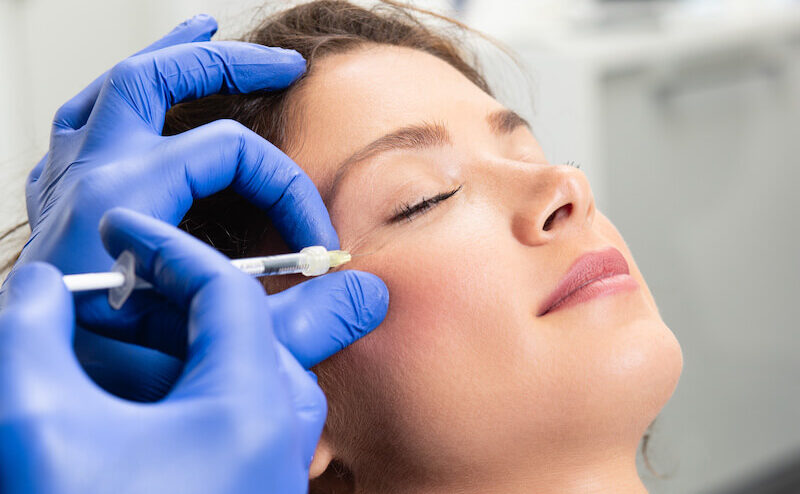
Platelet-Rich Fibrin Wrocław – Nowa Estetyka Medical Center
Injection of active fibrin (i-PRF) is the latest discovery in aesthetic medicine – but how exactly does platelet-rich fibrin work?
As we age, the skin loses valuable nutrients, collagen, and elastin. This results in noticeable signs of photoaging, loss of elasticity and firmness, and more prominent wrinkles. The goal of active fibrin injection is to gently reduce wrinkles and stimulate skin cells for long-term self-regeneration.
The immediate effect, which is wrinkle reduction, is achieved by the formation of a fibrin fiber network under the skin. Coagulating fibrin begins to lift the tissues above it, providing a mild plumping effect. The long-term cell stimulation effect is due to the platelets (thrombocytes) trapped between the fibrin fibers.
The thrombocytes continuously, but slowly, release their stored growth factors. This leads to increased multiplication of endothelial cells in the blood vessels, improving tissue blood supply and nourishment. Fibroblasts are also activated, resulting in the synthesis of new collagen – the main factor responsible for the skin’s firmness and elasticity.
The mechanism of action for i-PRF active fibrin therapy can be compared to platelet-rich plasma (PRP) therapy. However, the significant difference lies in how the growth factors are released from the platelets. Their slow and prolonged release during platelet-rich fibrin (i-PRF) therapy provides a much better effect than their rapid release, as seen in mesotherapy.
Cells are constantly stimulated, and there is no need for frequent renewal of the stimulating “signal,” with the effect lasting up to 2 years.
| Procedure duration | approx. 1 hour |
| Anesthesia | local |
| Recovery | the patient can return to work immediately |
| Results | up to 2 years |
| Safety | high |
| Complications | none |
| Indications | deep wrinkles, tissue loss, acne scars |
Platelet-Rich Fibrin – Procedure Overview
The platelet-rich fibrin injection is performed under local anesthesia. 30 minutes before the injection, a cream containing anesthetic ingredients is applied to the areas of the skin being treated, to ensure the highest level of comfort during the procedure.
A small amount of blood is drawn by the doctor, separated, and the resulting solution is drawn into a syringe equipped with a micro-needle, which causes almost no discomfort.
The entire procedure takes approximately 60 minutes.
Contraindications
Treatments involving the use of the patient’s own blood, or autologous material, are considered some of the safest procedures in aesthetic medicine, as they carry minimal risk of allergic reactions or intolerance.
Contraindications to the procedure include:
- autoimmune diseases
- pregnancy and breastfeeding
- cancer
- some blood disorders